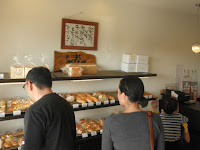December 26, 2015
"Mikan" mandarin oranges enliven Japanese families in happy holiday season
Japanese "mikan"mandarin oranges are an indispensable item for merry family gatherings in Japan during the happy New Year's holidays.
Mikan oranges, known as satsuma mandarin or citrus unshiu in the West, are one of the fruits which are closest to Japanese, particularly in the winter time.
 Tara is a small rural town located in the southern part of Saga Prefecture, southwestern Japan, but it is proud of being a top mikan producing area in the prefecture. Saga is third in rankings of per capita mikan production volume among Japan's 47 prefectures. Mikan, to be pronounced "meekanh" in the Japanese language, literally means "sweet citrus."
Tara is a small rural town located in the southern part of Saga Prefecture, southwestern Japan, but it is proud of being a top mikan producing area in the prefecture. Saga is third in rankings of per capita mikan production volume among Japan's 47 prefectures. Mikan, to be pronounced "meekanh" in the Japanese language, literally means "sweet citrus."Tara mikan growers believe that sea breezes blowing up from the Ariake inland sea to the east from the town help make sweet and slightly sour oranges in the region.
Various kinds of citrus oranges occupy the shelves in the front area at Tara Farmers' Market in the center of the town, and attract mikan lovers from not just from Saga but also from other prefectures.
 Tara became well known when it developed a very early tangerine species, called Ooura Wase, in 1980. The orange can be harvested from late September. Because other early growing species were developed in later years, Tara can supply many kinds of mikan oranges from autumn to next spring seamlessly.
Tara became well known when it developed a very early tangerine species, called Ooura Wase, in 1980. The orange can be harvested from late September. Because other early growing species were developed in later years, Tara can supply many kinds of mikan oranges from autumn to next spring seamlessly.Mikan oranges at the farmers' market come with tags showing the product name, the grower's name and his or her producer numbers, which assure consumers of the safeness of their products.
Local mikan growers ship most of their harvests on agriculture cooperative-run channels, but they can also supply part of their products to the farmers' market. This enables them to be keen to changes in consumers' taste.
One species at the farmers' market is yellowish green. The orange, called "Haruka," looks like a lemon or a lime, though it is larger in size. "This can be eaten, not for juicing, like lemons," a market employee said. "Just try it. You will find a sweet, good smelling orange," she said.
 A wide variety of mikan oranges are available for Japanese consumers at present. This reflects decades of efforts by mikan growers in Japan to counter America's pressure from the 1970s for liberalizing Japan's orange imports.
A wide variety of mikan oranges are available for Japanese consumers at present. This reflects decades of efforts by mikan growers in Japan to counter America's pressure from the 1970s for liberalizing Japan's orange imports.Mikan oranges have been always with Japanese in their life over centuries. Dried mikan skins have been used as a material in Chinese medicine or as an ingredient for spices.
 Mikan juice also can be used as an invisible ink. Letters written on white paper with mikan juice appear, when dried. This used to be fun for children when they gathered to play at someone's house in winter.
Mikan juice also can be used as an invisible ink. Letters written on white paper with mikan juice appear, when dried. This used to be fun for children when they gathered to play at someone's house in winter.Mikan growers have to keep a watch not just on consumers' taste but also on climate changes. The global warming is pushing up the temperature of farming areas in various parts of Japan, in some cases, making it difficult to grow certain farm products.
 Mikan production is so vital to the town's economy as the white flower of mikan is designated as the town flower. Tara mikan growers may try to adapt their business more to the situation in the years ahead.
Mikan production is so vital to the town's economy as the white flower of mikan is designated as the town flower. Tara mikan growers may try to adapt their business more to the situation in the years ahead. 














































